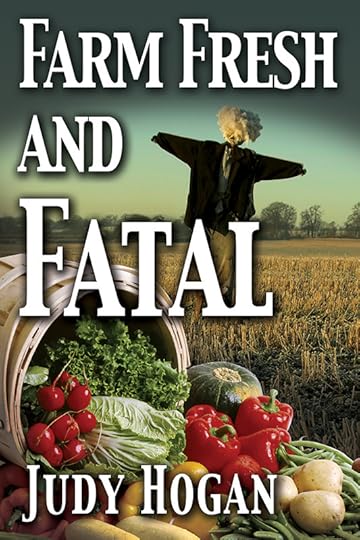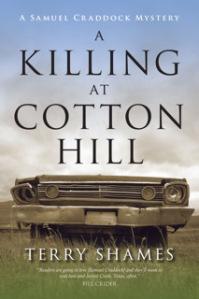Debra H. Goldstein's Blog, page 35
October 7, 2013
Guest Blogger: Judy Hogan – From Experience to Mystery
FROM EXPERIENCE TO MYSTERY by Judy Hogan
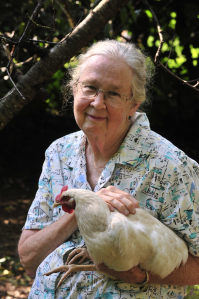
Being seventy-six has so many advantages for a mystery novelist. I have all those experiences behind me, and in my case they were quite diverse. I’ve never earned a living writing, so besides being a teacher of creative writing, my second vocation writing is my first. I’ve earned money being postmaster relief, a newspaper carrier ( I’m not very good at throwing). a secretary, a temporary typist, a baker of bread, a babysitter and maid, a library assistant, and a small farmer. I’ve also been a stay-at-home mom. I’ve written book reviews, organized distribution and promotion schemes, including one of being in charge of an old semi, a library bookmobile. I briefly lived a middle-class life, but mainly I’ve lived on as little as possible in order to free writing time.
I’ve lived in Kansas, Oklahoma, Pennsylvania, New York, Ohio, West Virginia, California, Florida, Texas, and North Carolina. I’ve moved forty-two times house to house. I’ve traveled to England, Scotland, Wales, Russia, Finland, Sweden, Denmark, France, Switzerland, Germany, Holland, and Belgium.
I have good friends in many states and some foreign countries. I’ve been through two marriages, both ending in divorce. Where I live now and have for nearly fifteen years is the first house and land I’ve ever owned. I’ve lived within the black community and published new African American authors when I edited a small press, 1976-91.
The real richness for me as a writer, however, is the people I’ve known and loved and sometimes hated. I’ve learned to live with myself and other people, often staying in the homes of others. Then I’ve learned so many lessons the hard way. I was very naive when I emerged into adulthood as I had led a protected life as a minister’s daughter. Once out of the manse, I was eager to learn more about people and the world. I did. I was manipulated and learned how to get free. I was treated badly and learned I needed to pick up weapons. I learned that, when I picked up weapons, so did my adversaries.
One of the first questions I ask myself when I’m planning to write a new mystery is: who shall I kill off, and who shall be the murderer. I start thinking of people I learned to hate or to distrust and avoid. I haven’t run out of villains yet!
The situations/settings are taken from places I’ve lived or visited. The first novel, The Sands of Gower, was set in my favorite place to get away and write in a bed and breakfast house on the Gower peninsula of Wales. The characters are based loosely on people I’d met there, where I’d been four times before I wrote it in 1991. The landlady was based on my real landlady, and I showed it to her to be sure she was okay with it. She was.
In later novels (there are now twelve, though only numbers five and six are published), I’ve also used real people as a starting point, both my good guys and my villains, sometimes blending two people into one character, as Proust did. Then my imagination takes over. I’ve used my experience living in a suburban rooming house; working at an historically black college, selling at a farmers market, working in a bakery, and living on a small farm.
I’ve also been a community activist so my novels take up contemporary issues that concern me: air pollution, safe nuclear storage, racism, problems with education, local politics, the treatment of Hispanic workers, fracking.
I also have modeled my sleuth on myself. That’s risky, too, but I like challenges and have been an emotional and financial risk-taker all my life. So Penny Weaver is my age, also an activist, but her love life has been more successful than mine as she found her soulmate at age fifty-four, and she and Kenneth Morgan, a Welsh policeman, married and live part of the year in Wales. Penny uses my recipes in The PMZ Poor Woman’s Cookbook (self-published in 2000) to make healthy food, using fresh vegetables and whole grain and soy flour in baking. She’s part of an interracial activist group, as am I, but her group accomplishes even more than the ones I’ve been in. She’s more at ease with lots of people dropping in unannounced, and though I have a social side, I like a lot of time alone. As happens to me, too, people talk to her, and this is often how she solves the murder. We both trust our intuition.
I use Penny’s point of view throughout the books. Hers is the way of looking at the world that I know best. Elizabeth George in Write Away says the point of view character’s voice should not be the author’s voice, and I realize, though I’m using the way I see the world and other people, there is a skeptical tone, a humorous twist to hers that surprises me. Penny might be expressing thoughts I have but don’t own up-front, snide remarks I never say out loud and scarcely realize I think, but maybe especially in this way she separates herself from me most clearly.
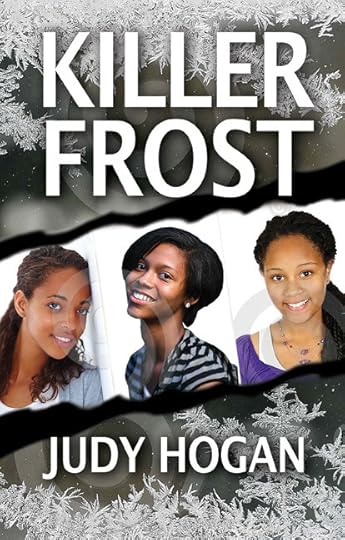 For example, at the beginning of Killer Frost, Penny notes of a new student at the historically black college where she is hired to teach remedial English: “He wore jeans that had slipped to ride around his hips, revealing his red and white striped boxer shorts. Was he showing off the St. Francis colors?”
For example, at the beginning of Killer Frost, Penny notes of a new student at the historically black college where she is hired to teach remedial English: “He wore jeans that had slipped to ride around his hips, revealing his red and white striped boxer shorts. Was he showing off the St. Francis colors?”
Or on page 9 of Farm Fresh and Fatal: as she and her friend are driving up to the new farmers market, “Through her window, cracked enough to let in air but keep rain out, she could hear the drum roll of the rain as it beat on the new red tin roof of their shelter. Was it beating out a welcome or a warning? Now where had that thought come from? The posts that separated the individual stalls were varnished a bright red and should have been cheery. They would have reflected the sun had there been any.”
Thoughts like those come easily to me in Penny’s persona but are rare in my own conscious mind. One reason I love to write fiction is that experiences I’ve had, for instance, with my African American neighbors, have been hard to articulate in poetry or non-fiction, but in fiction, when I throw my characters into a scene, my deeper mind knows how they’ll behave, what they’ll say. I hear their voices and know more about their interior thoughts than I had realized I did. That mystery, for me, is the best part of being a mystery novelist.
~ ~ ~ ~ ~
Judy Hogan’s first mystery novel, Killer Frost, was published by Mainly Murder Press on September 1, 2012 in both trade paperback and e-book formats. Her second novel in the Penny Weaver series went on sale on October 1, 2013. Beaver Soul, a poem written about her early experiences in Russia, recently was published by Finishing Line Press. Judy founded Carolina Wren Press (1976-91) and was co-editor of Hyperion Poetry Journal, 1970-81). She has also published five other volumes of poetry and two prose works with small presses. She has taught all forms of creative writing since 1974. She joined Sisters in Crime in 2007 and has focused on writing and publishing traditional mystery novels. In 2011 she was a finalist in the St. Martin’s Malice Domestic Mystery contest for Killer Frost. The twists and turns of her life’s path over the years have given her plenty to write about. She is also a small farmer and lives in Moncure, N.C., in Chatham County near Jordan Lake.


September 15, 2013
Guest Blogger: Joanne Guidoccio – From Teacher to Author
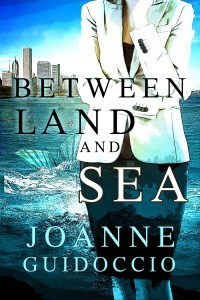 FROM TEACHER TO AUTHOR: An interview with Joanne Guidoccio…
FROM TEACHER TO AUTHOR: An interview with Joanne Guidoccio…
Tell us about your upcoming novel, Between Land and Sea.
This contemporary version of The Little Mermaid offers hope and inspiration to anyone who has been dumped, deceived or demoted. It is the first in a trilogy about the Bella tribe of the Mediterranean kingdom. In Between Land and Sea, Isabella gives up her tail for an upwardly mobile international banker. Her grandmother, chief elder of the tribe, is furious and, in a fit of rage, transforms Isabella into an overweight, middle-aged woman. The horrified banker abandons Isabella on the fog-drenched shores of southwest England. Alone and practically destitute, Isabella is left with only a suitcase and a magic tablet that has online mermaid support. On her human journey as Barbara Davies, Isabella encounters a cast of unforgettable characters, among them supportive and not-so-supportive women, deserving and undeserving men, ex-mermaids and several new Agers.
What inspired you to write this book?
I never intended to write fantasy, preferring to take my distance from vampires, werewolves, witches, zombies and other such creatures. Instead, I like to curl up with historical and contemporary women’s fiction, psychological thrillers, cozy mysteries and memories. So, I surprised myself and everyone in my circle when I signed up for a series of creative writing workshops with science fiction author Sarah Totton. As I took notes, I observed the rapt attention and fascination on the faces of my fellow learners. Unlike me, they were not feverishly writing or asking questions about literary techniques; they were mentally plotting paranormal romances and young adult dystopian novels. And then the wheels started turning. Could I write fantasy?
Do you have any writing rituals?
When I retired from a 31-year teaching career, I had only a vague idea of what life after retirement would look like. Leisurely breakfasts. Lunches with friends. Yoga. Traveling. Writing when the muse struck. Three months into retirement, I reached the following conclusions: I needed more than this patchwork quilt of activities and the muse does not appear regularly. If I wanted to seriously pursue a writing career, I needed more structure in my life.
I’ve kept the leisurely breakfasts, but do not linger over that second cup of coffee. If I choose to have more than one cup, I do so while checking email and social media. At 9:00, I start writing. My goal is 1000 words a day. At first, I used the oven timer to keep me on task, but that annoying sound reminded me of the incessant school bells, so I invested in a bird clock. Each hour, one of my feathered friends, among them the Downy Woodpecker, Belted Kingfisher, and Great Horned Owl, chirp and remind me to pace myself.
Are you working on a new project?
Ideas are percolating for the second book in the mermaid series, The Coming of Arabella. I have written about 16,000 words of the first draft and intend to make this book my winter project. Before starting Between Land and Sea, I had several other manuscripts in the works. My cozy, A Season for Killing, and a memoir of my cancer experience, When It Comes Out of Nowhere, are sitting on the back burner.
~ ~ ~ ~ ~
Joanne Guidoccio taught mathematics, computer science, business and co-operative education courses in secondary schools throughout Ontario for 31 years. In 2008, she took advantage of early retirement and filled her days with workshops, seminars and courses. Slowly, a writing practice emerged and her articles and book reviews started appearing in newspapers, magazines and online. Her debut novel, Between Land and Sea, will be released by Soul Mate Publishing in September 2013.
in secondary schools throughout Ontario for 31 years. In 2008, she took advantage of early retirement and filled her days with workshops, seminars and courses. Slowly, a writing practice emerged and her articles and book reviews started appearing in newspapers, magazines and online. Her debut novel, Between Land and Sea, will be released by Soul Mate Publishing in September 2013.
Joanne lives and writes in Guelph, Ontario.
Where to find Joanne…
Website: http://www.joanneguidoccio.com
Twitter: https://twitter.com/joanneguidoccio
Facebook: http://www.facebook.com/BetweenLandandSeaJG
Pinterest: http://pinterest.com/jguidoccio/


September 7, 2013
I Didn’t Know I Was Going Crazy by Debra H. Goldstein
I DIDN’T KNOW I WAS GOING CRAZY….by Debra H. Goldstein
I am the mother of twins. My daughter slept through the night almost immediately. My son functioned on two non-consecutive hours of sleep in a twenty-four hour period. I thought I was using my time effectively putting a laundry in at 2 a.m. and changing it at 4 a.m. because I was up with him anyway. Months later I learned that my behavior during those first weeks after the twins were born was best summed up by a friend who came to visit and immediately got on the phone or started beating the drums: “She doesn’t know she’s going crazy.”
The daughter who slept through the night and rarely gave her father or me any grief is getting married in a few weeks. It is an exciting time for her and a combination of poignant moments for me. She came without her fiancé for the Jewish holidays and as we sat up late talking, I thought about how this would be the last time we talked into the wee hours without her husband being upstairs wondering when she would be coming to bed. We went for her final dress fitting last week and I swear she glowed as she tried it on and remembered why she fell in love with it. I almost cried at how beautiful she looked – but I didn’t. Instead, I thought about how she had that same look of happiness in her watermelon patterned dress the first day she went to school. Lest you worry, I assure you I won’t hold back the tears when she radiantly comes down the aisle on her father’s arm.
When I haven’t been ricocheting between memories of the past and the creation of present ones, I have been attending to wedding details. Who will sit with who, how will the processional proceed, how does the menu my daughter and her fiancé blessed have to be altered for those who replied to my request to let me know of any dietary restrictions with needs that included vegetarian, vegan, or dishes that are gluten, lactose, peanut, olive oil, or fig free. My personal favorite – “I eat anything, but I don’t like corn or rice.” Not a problem – I’ve entered that request along with the others into the myriad of spread sheets my son-in-law to be, friends, and I have created to track the different details of the wedding.
My writing and personal life are taking a backseat to the energy and passion I am putting into the wedding, but it is okay. This time, I know I’m going crazy.


August 18, 2013
Guest Blogger Terry Shames: The One Thing That Defies Organization

Terry Shames
The One Thing That Defies Organization by Terry Shames
With the lead-up to publication of my debut novel, A KILLING AT COTTON HILL, came months of unaccustomed work preparing for marketing and promotion. I had heard how much time and effort it took, but I was unprepared for the fact that everything else pretty much came to a standstill. I plunged in with great enthusiasm—and with a wave “goodbye” to my usual, organized self.
The novel came out mid-July, and at some point I realized I had to tackle the chaos in my life. I bought a filing cabinet and instigated a filing system; read through several months of “I’ll get to it later” emails, flagging and filing them; and made a list of the blogs I’ve posted for the last year so I know who I blogged for, and when. So I have managed to whip my professional life into shape, but what about my home life?
I had managed to keep up pretty well, but recently I took on the big one: I dragged out all the picture albums, boxes of photos, and negatives (remember those?) from the cabinet where they seemed to have multiplied. I thought I would take everything to one of those places that scans pictures into digital format. Before that, though, I was determined to ruthlessly throw out all the duplicates and the photos that meant nothing to me. How many pictures of a hike my family took in Colorado when I was 16 did I really need?
Looking through the albums, my first thought was, “Who are these people?” There were pictures of people I haven’t seen in thirty years. I don’t remember where they went—or even their names! The best thing I can say is that they remind me of my past. Then there were countless photos of my son’s friends from childhood—kids I don’t remember or recognize. They are darling pictures, but I don’t know who they are!
And then I started wondering whom I was going to all this trouble for. My husband and I are busy and don’t sit around reminiscing over photo albums. My sister has plenty of pictures of her own to deal with. My son hasn’t a sentimental bone in his body. I can’t ever see him looking through these pictures and thinking fondly, “Oh, there’s my mom’s Aunt Lottie when she was in her 30s.” More likely, he’d say, “Who’s that?”
I have piles of pictures of me as a baby, and of my parents and their parents, taken when for some reason people thought it was better to take pictures of people standing far away. Half the time I can’t even see who is in the pictures. None of the people are famous, so it’s unlikely a future biographer will lament my profligate destruction of the pictures.
That’s not even to mention my husband’s family pictures. Removed from my mother-in-law’s apartment when she died a few years ago, the albums and loose pictures have stayed exactly where they were when they came into my house—in shopping bags in my husband’s study. Pictures of people I never knew.
So why do I keep all this stuff? All I know is that it makes me feel queasy to think of throwing them away. Do I worry that one of these days I’ll regret not having them? Do I imagine that one day I will want to pore over them? Who knows? I remember once going through a box of random photos with my grandmother. We ran across a photo of a man in a Civil War uniform. “Who is that?” I asked. My grandmother laughed, “I don’t know who it is. I don’t know why I have it.” And she tucked it back into the box.
I’d like to hear whether other people have the same impulse to keep all those pictures—and why?
Terry Shames grew up in Texas. She has abiding affection for the small town where her grandparents lived, the model for the fictional town of Jarrett Creek. A resident of Berkeley, California, Terry lives with her husband, two rowdy terriers and a semi-tolerant cat. She is a member of Sisters in Crime and Mystery Writers of America.
In A KILLING AT COTTON HILL: A Samuel Craddock Mystery, the chief of police of Jarrett Creek, Texas, doubles as the town drunk. So when Dora Lee Parjeter is murdered, her old friend and former police chief Samuel Craddock steps in to investigate. He discovers that a lot of people may have wanted Dora Lee dead—the conniving rascals on a neighboring farm, her estranged daughter and her surly live-in grandson. And then there’s the stranger Dora Lee claimed was spying on her. During the course of the investigation the human foibles of the small-town residents—their pettiness and generosity, their secret vices and true virtues—are revealed.
Her second Samuel Craddock novel, THE LAST DEATH OF JACK HARBIN will be out in January 2014. Find out more about Terry and her books at http://www.Terryshames.com.
August 11, 2013
Would We? Could We? by Debra H. Goldstein
Would We? Could We? by Debra H. Goldstein
Picture a group of women sitting around a fireplace celebrating a special event in their lives. Good food, friends, sips of wine, and conversation that slips from the present into the past. While most share memories of happy times, children’s antics, and first romances, at some point in the evening the stories begin to be tinged with sadness and frustration.
Patches of the group become silent – lost in individual thoughts of what might have been. It doesn’t seem to matter if the thoughts center on marriage, children, friendship, or career. The questions are the same. “Would we?” “Could we?” “And why didn’t we?”
The answers are consistent, too. Time pressures, immaturity, being pulled in too many directions, trying to please everyone, and ignorance that anything was amiss or could be better are all excuses offered.
Awareness comes slowly. We realize we tried. The thought that none of us may have done it perfectly but we acted in the only way we knew at those times warms us almost as much as the new bottle of wine we open and drink. We raise our glasses in a toast: “We would. We could. We did.”


July 28, 2013
Guest Blogger Judy Alter – Researching the Lowly Hot Dog

Judy Alter
Researching the Lowly Hot Dog by Judy Alter
We all do a lot of research on setting and other things to make our novels accurate. For the Kelly O’Connell series I studied Craftsman design and the Craftsman movement, because Kelly is a real estate agent who specializes in restoring the priceless Craftsman houses in her beloved Fairmount district in Fort Worth, Texas.
But one of the most fun pieces of research I did was for the fourth and most recent Kelly O’Connell Mystery, Danger Comes Home. I decided one of the characters as going to open an upscale hot dog café. Then I began to research the kinds of hot dogs available and the number of restaurants devoted solely or primarily to hot dogs. To my amazement, they are all over the country. The majority are clustered throughout the Midwest, from Wisconsin and Michigan clear down to the South and Texas, with just a smattering on the West Coast and more on the East Coast. You can see an overall map and search by state at http://www.hot-dog.org/ht/d/sp/i/51784/pid/51784. Click on any pin and you can read all about that restaurant, from location to menu. So, reassured that the idea wasn’t bizarre, I proceeded.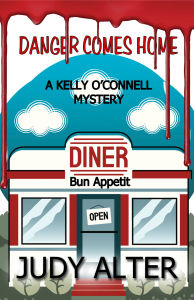
Next came the toppings. I remember a walk-up stand in Santa Fe called, I think, The Chicago Dog. So I began there. A Chicago dog is all beef on a poppy seed bun and topped with yellow mustard, chopped white onion, sweet pickle relish, a dill pickle spear, tomato slices, and pickled pepper. A colorful mouthful of flavors. The traditional Coney Island dog is again all beef, topped with chili without beans, chopped white onions, and mustard. A plain old chili dog may have chili and cheddar (my preference). Don’t confuse the two and don’t associate the Coney dog with Coney Island—it began in Michigan.
But then there are hot dogs called frank and beans, the dog nestled in a bun with a slice of bacon and topped with warm baked beans (no, you Texans, not pintos but “northern beans”) , diced onion, and mustard (in hot dog lingo mustard is always yellow salad mustard, not the fancy stuff like whole grain or Dijon). And then there’s the Reuben dog—you guessed it! Sauerkraut, Swiss cheese and a Thousand Island-type dressing (I make my own Thousand Island and it’s so good—also easy). Somewhere I read about a Banh mi dog, with a topping of brown sugar dissolved in white vinegar with shredded carrots that have marinated in the mixture. Top the dog with mayo, thinly sliced cucumber and jalapeno, the carrots, and cilantro.
Want to give your hot dog a Mexican flair? Char some corn in a skillet, add vegetable oil and thinly sliced scallions (white part only), season with salt and pepper. Meanwhile mix mayonnaise with lime juice. Top the dog with the corn mixture, the lime mayonnaise, crumbled feta, and the sliced scallion greens Sprinkle with chili power. A Hawaiian dog has grilled pineapple wedges and red onion rounds, chopped and seasoned with sugar, salt and cayenne. What to call my café? I ran a contest, and some wonderful names were suggested: Hot Diggety Dog, Dogs of Distinction, Frankly Wienerful, Decadent Dog, Haute Dogs, The Finer Frank, and Hot Dog Heaven, among others. The winner, chosen by my daughter, is Bun Appetit!
~ ~ ~ ~ ~ ~
Judy Alter’s newest Kelly O’Connell Mystery, Danger Comes Home, launched July 22 in e-book form with print to follow. Others in the series are Skeleton in a Dead Space, No Neighborhood for Old Women, and Trouble in a Big Box. Her second mystery series, Blue Plate Café Mysteries, launched in February with Murder at the Blue Plate Café.
In Danger Comes Home, Kelly O’Connell can’t sit idly by while her world is shattering. Daughter Maggie is hiding a runaway classmate; protégé Joe Mendez seems to be hanging out again with his former gang friends and ignoring his lovely wife, Theresa; drug dealers have moved into her beloved Fairmount neighborhood. And amidst all this, reclusive former diva Lorna McDavid expects Kelly to do her grocery shopping. In spite of Mike’s warnings, Kelly is determined to save the runaway girl and her abused mother and find out what’s troubling Joe, even when those things lead back to the drug dealers. Before all the tangles in the neighborhood are untangled, Kelly finds herself wondering who to trust, facing drug dealers, and seeing more of death than she wants. But she also tests upscale hot dog recipes and finds a soft side to the imperious recluse, Lorna McDavid. It’s a wild ride, but she manages, always, to protect her daughters and keep Mike from worrying about her—at least not too much.
~ ~ ~ ~ ~ ~
An award-winning novelist, Judy Alter is the author of four books in the Kelly O’Connell Mysteries series: Skeleton in a Dead Space, No Neighborhood for Old Women, Trouble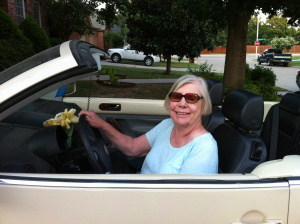 in a Big Box, and Danger Comes Home. She is also the author Murder at the Blue Plate Café, first in a new series.
in a Big Box, and Danger Comes Home. She is also the author Murder at the Blue Plate Café, first in a new series.
Her work has been recognized with awards from the Western Writers of America, the Texas Institute of Letters, and the National Cowboy Museum and Hall of Fame. She has been honored with the Owen Wister Award for Lifetime Achievement by WWA and inducted into the Texas Literary Hall of Fame.
Judy is retired as director of TCU Press and the mother of four grown children and the grandmother of seven. She and her dog live in Fort Worth, Texas.
July 21, 2013
BSP AND BEING A WRITER by Debra H. Goldstein
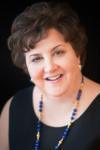 BSP AND BEING A WRITER by Debra H. Goldstein
BSP AND BEING A WRITER by Debra H. Goldstein
Creativity, diligence, networking, engaging in BSP, and a lot of luck characterize most successful writers. Although a writer can’t predict luck, the other factors are all within a writer’s control.
Every story, poem, or novel begins with an idea. The key is whether the writer has the work ethic to take imagination, produce a work product and then rewrite it until it is polished. Many would-be writers talk a good game, but don’t follow through. There are a million excuses to avoid writing. Some of mine include: I’m preparing things for my daughter’s wedding; we’re traveling because of family events; I’m trying to add exercise into my life and the classes interrupt my writing schedule; I went to lunch at 11:30 and we had so much fun it was 2:30 before I left the restaurant to do my other errands; or I just don’t feel creative today. (Other than the dog ate my notebook, what are some of your excuses???)
Although writing is a solitary activity, being known helps one’s writing be read. J.K. Rowling, the author of the Harry Potter series proved this adage with the dismal sales of her new crime novel, The Cuckoo’s Calling. Although reviews were positive for the book, it only sold about 500 copies when people believed it to be written by a no name new author. Once her true identity was revealed, the book became a best seller. Most of us will never have the recognition of J.K. Rowling, but entering contests, networking with readers/fans, attending conferences, and being out there with social media is the only way to enhance sales and help a writer gain public credibility. Many of us are comfortable networking with other people, but the big question is why is engaging in BSP (Blatant Self Promotion) so difficult?
Maybe the problem with BSP is that all of us are taught as children to be modest. We are encouraged to achieve goals and win awards, but we are called out if we rub other people’s noses in our success. For the past week, I have been flying high because the first chapter of my work in progress, Should Have Played Poker: a Mah Jongg Murder Mystery, received a 2013 Alabama Writers Conclave First Chapter Award, but other than an “I’m dancing on the table” posting on Facebook the night of the award, I wasn’t initially able to bring myself to fully publicize it. My friends thought me crazy. It was only after one wanted to write a press release, another friend put it on her Facebook and twitter pages, and one sent it out as an e-mail to a group of our friends, that I finally got around to adding the news to my website, linked in information, and thought about addressing it in this week’s blog. I’m working on being more out there but I’m curious how do you feel about broadcasting this type of information about yourselves? Does it come easy or as most writers, has BSP required you to re-educate yourself to behave in a manner that isn’t innate?


June 18, 2013
Guest Blogger Anne McGee: Writing Creepy Mysteries for Children – Anne McGee’s Backstory
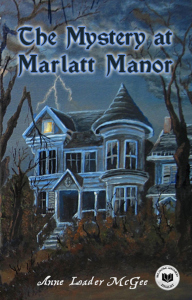 Writing Creepy Mysteries for Children – Anne McGee’s Backstory by Anne McGee
Writing Creepy Mysteries for Children – Anne McGee’s Backstory by Anne McGee
I felt so excited when Debra asked me to write an article for her blog. Then I went blank, and for a writer, that’s a really, really nasty feeling. Undaunted, I went for a walk, played some music, nibbled on some cashews, and stared out the window. Then it came to me! I would write the article tomorrow when my mind would be in a much more creative space. By then, ideas would come flowing in at jet speed, right? Wrong. SIGH . . . I had to put BIC (butt in chair) and get on with it.
So, let me tell you a little bit about myself, and how writing creepy, mystery stories for children began. I grew up in Auckland, New Zealand. As a young child I lived in a two-storied old house that had a kitchen and a living room downstairs, and six bedrooms and one bathroom upstairs. Only one of the bedrooms and the bathroom had electric light so candlesticks had to be used for the other five rooms. My fears of that gloomy old house grew as I did, and at night after going to bed I would pull the covers over my head so I could drown out the house’s creaks and groans, and whistle and moans of wind through the walls. Not to mention the strange shuffling sounds in the hallway that I just knew were ghosts coming to get me.
Somewhere around ten years of age, I started fantasizing that perhaps as the house settled down for the night, it was trying to tell me stories––stories of what it had seen and heard over the years. I was astounded at such an idea and immediately my imagination began to run wild. A thumping sound on the stairs became a tiger and his Prince escaping from an invading army; the whistle through the walls was a girl singing on a ship sailing off to a magical land. There was no end to the ideas triggered in my mind by believing that the house was telling me its stories. And from that time on, I not only stopped fearing where I lived, but also grew to be quite fascinated with other old houses, knowing that they, too, held stories in their walls just waiting to be heard.
My favorite writer as a child was the English author Enid Blyton. I loved her Secret Seven and Famous Five mystery books, and I became an avid follower of those characters. I do believe it was this English writer that influenced me to eventually pen my first children’s novel, The Mystery at Marlatt Manor. At the time it was only intended to be a stand-alone story. I had no idea it would become so popular that everyone would want to read more about the individuals who lived in the small Virginia town of Cedar Creek that I had created. Based on this feedback and encouraged by my publisher, I began a second book, The Mystery of the Missing Ming and found it a lot of fun taking those same characters on yet another adventure. The Ming story will be released in August, and then I will finish the third book in the series. When I wrote the first book, I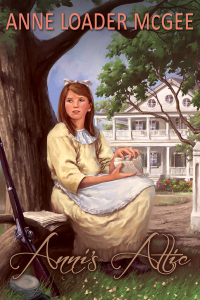 indicated that my main protagonist was a young girl who reluctantly discovers she has psychic abilities, so I have continued this paranormal slant in each of the other books, showing how this gift helps her solve the mysteries she encounters.
indicated that my main protagonist was a young girl who reluctantly discovers she has psychic abilities, so I have continued this paranormal slant in each of the other books, showing how this gift helps her solve the mysteries she encounters.
Although I love to write mysteries, I also like to write in other genres. Last year my historical fictional YA novel, Anni’s Attic was released by Vendera Publishing. The story took me about 15 years to complete, but it was a definite labor of love. The idea first came about when my friend and I began remembering having lived as cousins during the Civil War. Even though my memories of that life seemed vivid and clear, I still did extensive research for that time period. I flew to Georgia where the story takes place, went on plantation tours, and visited many Civil War historical places, such as cemeteries, and old homes (how could I miss not seeing an old home?). As with my mystery story, everyone is now asking when the sequel to Anni’s Attic is coming out! Something I hadn’t planned on at all!
One thing I have come to understand from the response received from readers, is that the possibility for sequels to your stories always exists, and it is important right from the start to create a good Bible of all your characters, their traits, their likes and dislikes, what happens to them, etc. In fact it’s critical you get everything correct with continuing characters because your readers will catch you out on even the smallest detail. Trust me, they forget nothing.
Thank you for reading this article. It’s been fun spending time with Debra’s readers. Do visit me on my web site when you have time.
www.annemcgee.com www.facebook.com/anne.l.mcgee.7
www.twitter.com/AnneMcGee www.annemcgee.com/wordpress/
~ ~ ~ ~ ~ ~ ~ ~ ~ ~ ~ ~

Anne McGee
Anne Loader McGee is a Graduate of the Institute of Children’s Literature, and is a long-standing member of the Society of Children’s Book Writers & Illustrators (SCBWI). She has studied writing at the American Film Institute and the University of California and Los Angeles (UCLA). Anne has published numerous articles for both children and adults, and her stories have appeared in The Kids’ Reading Room of the Los Angeles Times. She is also the co-author of the Sing Out Loud series of singing books for children.
Her first novel, The Mystery at Marlatt Manor (http://amzn.to/K92Ir8 Trailer: http://bit.ly/K966Cz ), became a finalist in the 2009 Bloom Awards while her latest publication, Anni’s Attic (http://amzn.to/10agVmh), won the Young People’s Division of the International Peace Award. Anne is originally from New Zealand and now makes her home in Southern California. You can visit her online at www.annemcgee.com for more information.
June 7, 2013
It’s Not Where You Start (It’s Where You Finish) by Debra H. Goldstein
It’s Not Where You Start (It’s Where You Finish) by Debra H. Goldstein
Recently, I listened to Barbara Cook’s rendition of the Cy Coleman and Dorthy Field’s signature song “It’s Not Where You Start, It’s Where You Finish” from 1973’s Broadway show, Seesaw. Forty years after the song debuted, the words remain true.
Whether one is writing a novel, short story, or poem, the process is the same. “It’s not how you go, it’s how you land.” Writing requires coming up with an idea, getting it down on paper, rewriting, possibly tossing out one’s original thoughts, and writing the piece again and again until the words flow. It often is a solitary process, but the sisterhood of writers have the ability to inspire and help each other.
The reality is “If you’re going to last, you can’t make it fast,…Nobody starts a winner, give me a slow beginner.” At Malice Domestic, I had the privilege of riding an elevator with Carolyn Hart. I’m a pretty confident person, but as the elevator went up, I stumbled over my words telling “Ms. Hart” how much I enjoy her books. During the conference, where she was honored with the Amelia Award, I heard how her writing career didn’t take off. Her first few books either were not published or failed to sell well, but she kept writing. When she became an overnight success, it had been a long night. Our paths crossed a number of times during the conference and at the Sisters in Crime breakfast. Ironically, we were in the elevator together again leaving the conference. This time, I congratulated “Carolyn” on her award and we actually laughed about spending the conference in the elevator.
Thinking back on the difference in my behavior during our elevator rides, I realize that the change in my attitude came from being impressed with her writing abilities and with her persistence and willingness to help other writers. Even during the hour interview tied to her award at Malice, she took the time to give a new writer a shout-out. She was the only one to do so. It takes a big person to share one’s limelight with others. Her work ethic and her generosity illustrate the premise that “Your final return will not diminish/And you can be the cream of the crop/It’s not where you start, it’s where you finish/And you’re gonna finish on top.”


May 19, 2013
Guest Blogger Michele Drier: The New? Maybe not.
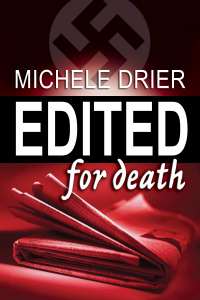
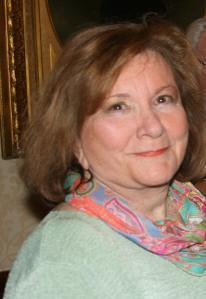 The New? Maybe not. by Michele Drier
The New? Maybe not. by Michele Drier
Long ago, as the earth was cooling, people used odd machines called “typewriters” to compose notes to one another.
These machines were developed after the discovery of electricity, but they were powered by a different source, human fingers. And they were called “manual” because of this.
They were difficult to use, these first “manual” typewriters. They consisted of a series of letters at the end of long rods, attached to a board, also with letters. When a finger hit a letter on the “keyboard”, the rod that held that letter would move and imprint the letter on a piece of paper, using an inked ribbon.
This was a huge step up from clay tablets, stone carving or foul fowl feathers, and the new technology was embraced by most people.
Not by the folks who wrote the stories you found in your daily newspaper, though.
These guys were lazy, or just conserving energy, so when they typed something other than their story, they used shortcuts.
“Manual” typewriters took a lot of pressure to pound the “keys” on the “keyboard” for that the impression to show up on the paper, so the first thing those guys eliminated was capital letters. To print a capital took an extra “keystroke”. The next thing those guys eliminated was a lot of punctuation. Again, an extra stroke.
Instead, they’d sling the carriage return and just start another paragraph.
So for a time everybody wrote like e.e.cummings.
But that wasn’t enough. It still took extra time to write notes or instructions to the men who actually set the type, using a machine adapted from a typewriter called a “linotype.” This machine produced a line of type (letters) molded from the pot of hot, liquid lead at the side of the machine.
Not incidentally, the molten lead floated around in the air and coated everything, including the coffee we drank.
The number of keystrokes was getting trimmed, but it still took more time than was warranted on composing messages to friends or other useless drivel, like notes from your interview, so abbreviations evolved.
thnx
c u
u r a pal
luv
And it wasn’t enough to use abbrv., you could also cut whole words out. For instance, if you wanted to say, “I’d appreciate it if you would respond to my question,” you could say “gimme yes or no.”
Invariably, the pronouns were dropped also. “hope all is well,” “coming over?”
As things go, this technology went the way of swan feathers, until today lots of people correspond using only their thumbs and a string of seemingly miscellaneous letters. OMG, BFF, ROTHWL, LOL, IMHO.
Gibberish? I think not. Just the evolving result of those memos and notes we typed to each other. I seldom use caps even today when I correspond, now by email, with friends still in the business.
When you write email, do you write in complete sentences and use capitals?
I’m tickled to think that the texters believe they’ve discovered something new.
We got there first.
~ ~ ~ ~ ~
When the earth was cooling, Michele Drier was a staff writer at the San Jose Mercury-News and caught the tail end of manual typewriters and hot lead. The lead is gone but the caps never came back.
Her first Amy Hobbes Newspaper Mystery, Edited for Death, set at a daily newspaper, was well-reviewed including the Midwest Book Review which called it “Riveting and much recommended.” The second mystery, Labeled for Death, due out in summer 2013, looks at the California wine industry. Michele is also the author of the five-volume Kandesky Vampire Chronicles, paranormal romances set in the field of international celebrity gossip journalism.
Contact Michelle via her website: http://www.micheledrier.com or facebook page, http://www.facebook.com/AuthorMicheleDrier or her Amazon author page, http://www.amazon.com/Michele-Drier/e/B005D2YC8G/




